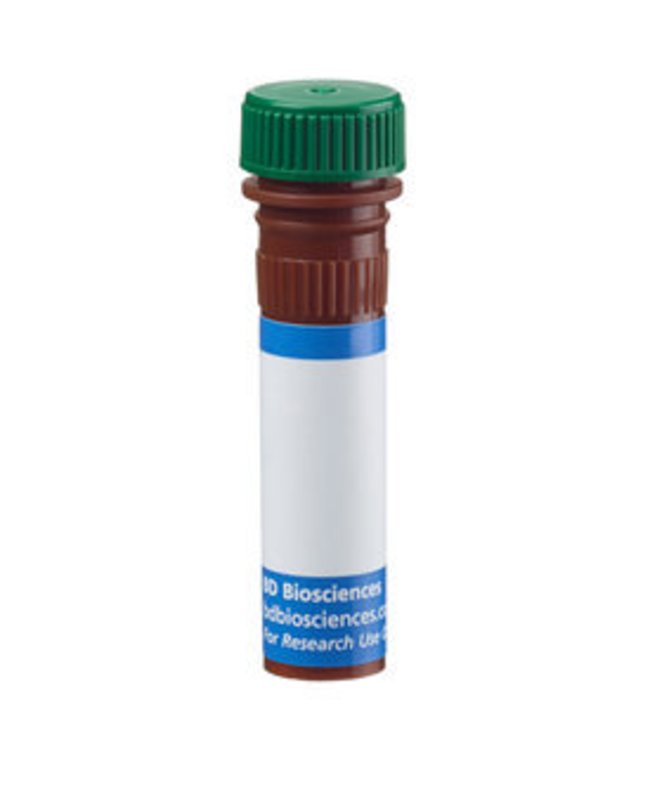CD25 Rat anti-Mouse, BB515, Clone: PC61, BD, Rat Monoclonal Antibody, Each

Details:
The PC61 antibody reacts with CD25, the low-affinity IL-2 Receptor α chain (IL-2Rα, p55) expressed on activated T and B lymphocytes from all mouse strains tested. IL-2Rα by itself is not a signaling receptor. However, it can combine with IL-2 Receptor β (CD122) and γc (CD132) chains to form high-affinity, signaling receptor complexes for IL-2. Resting T and B lymphocytes and resting and activated NK cells do not express IL-2Rα. CD25 is transiently expressed at a low level during normal B-cell development in the bone marrow on the CD45R/B220low TdT- sIg- Pre-B/Pre-B-II and CD45R/B220low TdT- sIgM sIgD- immature B stages, but not on the CD45R/B220low TdT sIg- Pro-B/Pre-B-I stage nor on CD45R/B220high TdT- sIgM sIgD mature B cells. It is expressed at a higher level during a very early stage of T-cell development in fetal and adult thymus. Peripheral CD25 CD4 lymphocytes called regulatory T (Treg) cells are involved in the maintenance of self-tolerance. It has also been reported that dendritic cells express CD25, recognized by mAb 7D4 (Cat. No. 553068). The PC61 antibody recognizes an epitope of CD25 which is distinct from the IL-2 binding site and from those recognized by mAbs 3C7 (Cat. No. 557364) and 7D4 (Cat. No. 553068). It blocks binding of IL-2 to CD25, presumably by inducing a conformational change in CD25. The antibody was conjugated to BD Horizon™ BB515 which was developed exclusively by BD Biosciences. With an excitation max of 490nm and an emission max of 515nm, BD Horizon BB515 can be excited by the 488nm laser and detected in a standard FITC set (e.g. 530/30-nm filter). This dye provides a much brighter alternative to FITC with less spillover into the PE detector.
Additional Information
| SKU | 10134611 |
|---|---|
| UOM | Each |
| UNSPSC | 12352200 |
| Manufacturer Part Number | 564424 |
